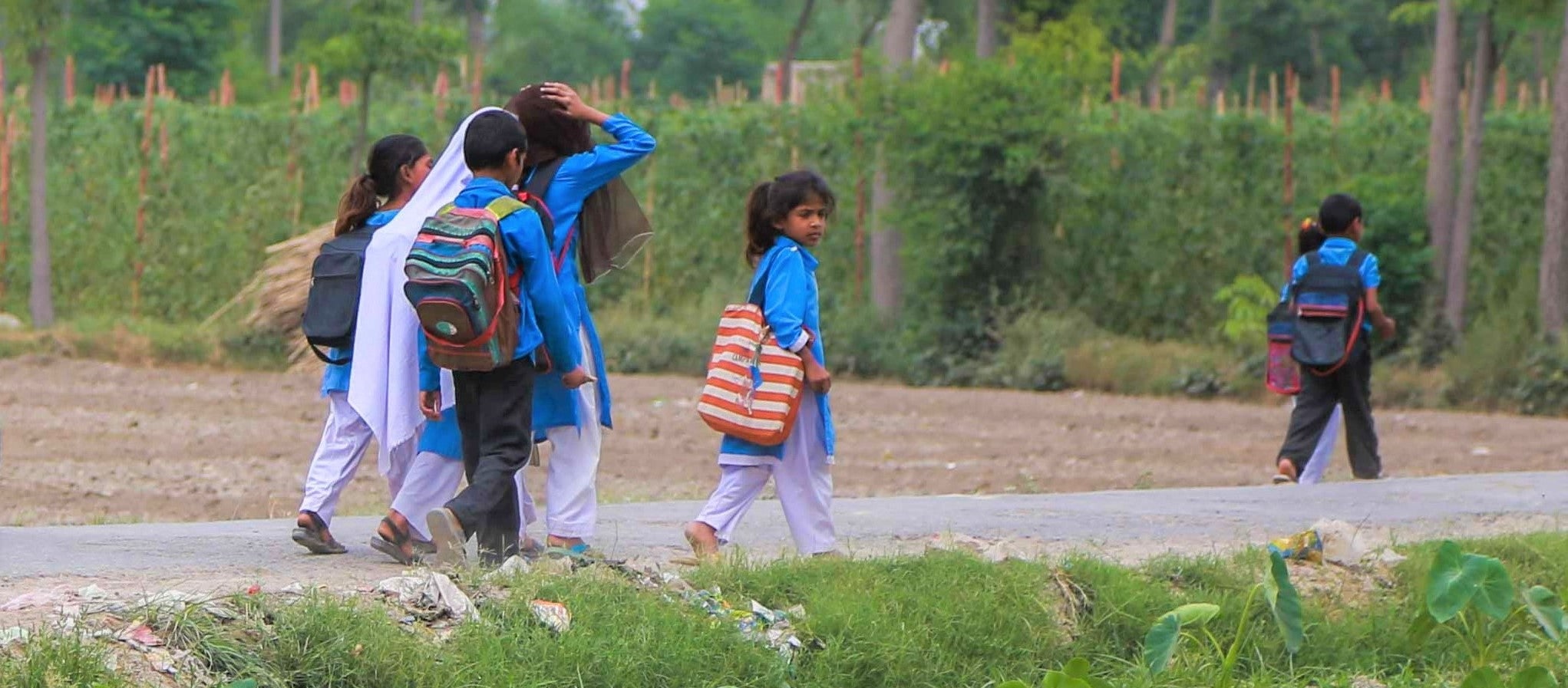 Children walking to school in Punjab, Pakistan | Image: World Bank
Children walking to school in Punjab, Pakistan | Image: World Bank
For a long time we have known that improved transport accessibility leads to more opportunities and better lives.
Accessibility describes how easy (or difficult) it is for people to reach services and opportunities. When you look at the data, significant accessibility gaps persist around the world. Globally 51% of individuals living in low-income countries reside within an hour of a city compared to 91% of individuals in high-income countries. This limited access to urban centers hinders rural populations from accessing services and opportunities, including healthcare, education, jobs, and markets. Gender plays an important role as well: as these findings from Pakistan illustrate, women typically must cover greater distances to reach basic services. Even for people living in cities, accessibility may vary depending on the availability of public transport, the impact of traffic congestion.
Lack of access is systematically linked to inferior development outcomes, even more so if motorized transport is not available. The inability to travel to healthcare facilities, for instance, has been associated with increased mortality and morbidity from treatable conditions. Conversely, improved access is often synonymous with improved development outcomes. For example, women with access to roads in Pakistan are twice more likely (14% vs 28%) to go to pre-natal consultations. In rural Morocco, girls’ enrollment in primary schools increased from 17% to 54% when their access to roads improved.
Looking particularly at rural roads investments, the construction of a new road can lead to a chain of positive impacts. When a rural community gets connected to the road network, people who could not reach healthcare, schools, or other essential services before are suddenly able to do so. Workers can access more and better jobs. Farmers can sell their products in more distant markets. But these outcomes can only materialize if rural road projects are carefully planned and prioritized. Also, while investments in road networks are often a critical first step toward enhancing accessibility, they should be integrated into a broader investment package targeting social and technological development overall.
However, transforming this knowledge into action had been hard to operationalize. Lack of data regarding the transport network, opportunities, limited computing power to calculate travel times in large areas and lack of consistent framework had made it hard for us to take this academic research into an operational reality. We needed to understand exactly which transport projects will have the highest impact on accessibility? How would this accessibility transform into household welfare? And how do we create tools to inform planning and investment decisions?
To address these questions, the World Bank’s Transport and Poverty and Equity teams jointly developed a new framework that relies on high-resolution mapping and other sophisticated analytical tools to provide a more granular view of how rural road infrastructure can benefit communities.
We are now able to deploy all that knowledge into operational action, by developing an analytical framework that highlights spatial disparities in access to services and opportunities, calculates the expected gains in accessibility from investments into road infrastructure and thereby informs the placement of transport investments throughout the region.
With the help of geospatial analysis tools, we are currently assessing about 90 potential road upgrading projects in Pakistan to evaluate which ones would bring the highest gains on access to healthcare, schools, and markets. In Bangladesh, we will be conducting extensive analytical work to determine the best ways to improve access to markets for fisheries and farmers. In Sri Lanka, a systematic investment prioritization framework and cross-sectoral collaboration platform is a key pillar of the recently approved Inclusive Connectivity and Development Project.
The World Bank is the largest provider of development financing for transport, with $5.3bn currently committed to rural roads in South Asia. However, this new framework goes beyond World Bank projects, and can be used by countries and other partners to inform rural road development in a way that maximizes welfare benefits. Our framework provides a powerful new tool to help ensure these investments bring measurable development benefits to those who need it most.



Join the Conversation